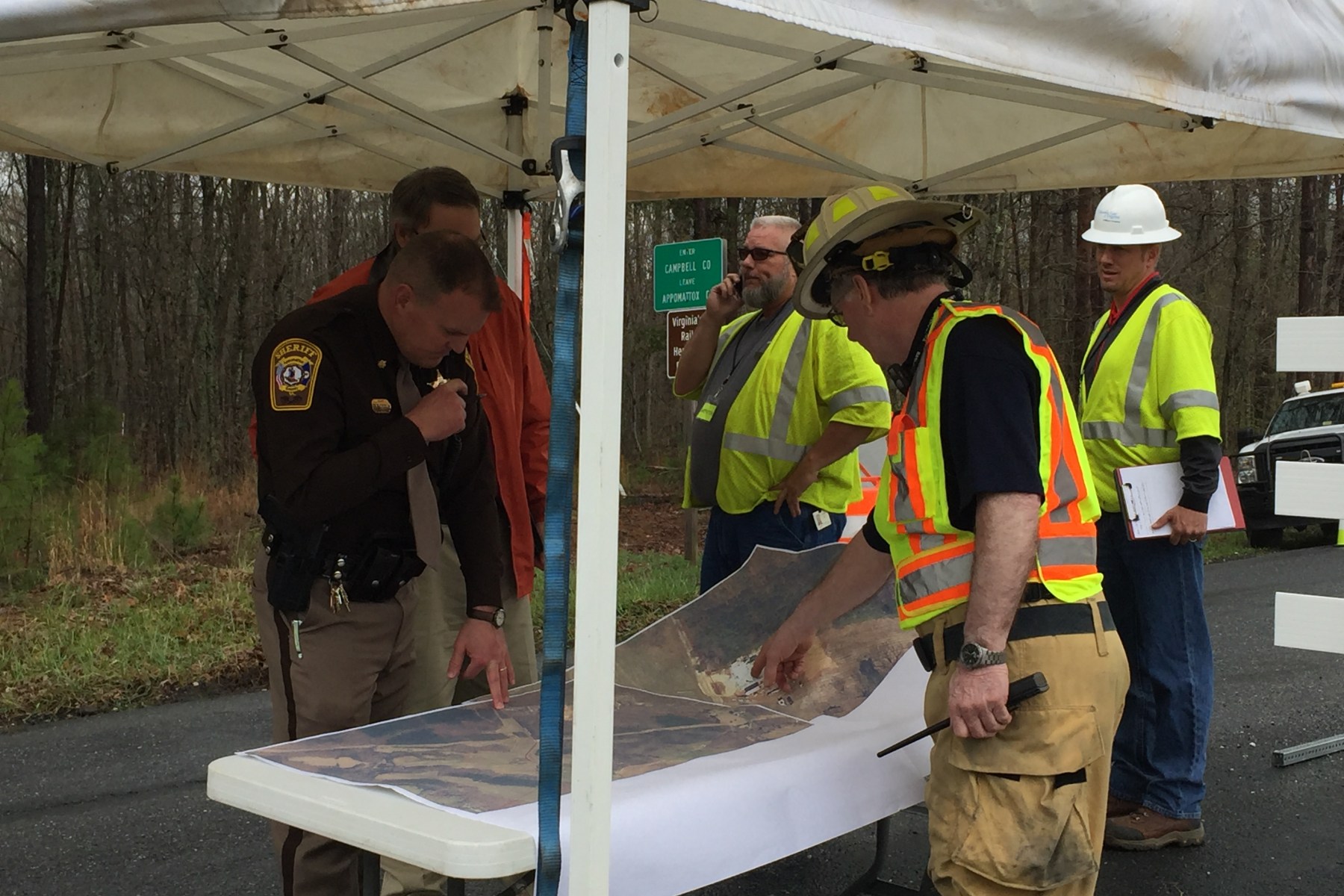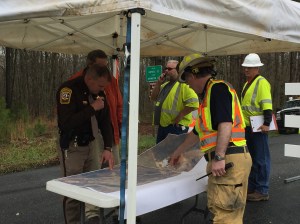Nearly 100 people participated in an emergency training exercise in central Virginia recently to ensure that emergency personnel are adequately prepared in the event of a natural gas pipeline emergency.
Williams coordinated the training exercise along its Transco pipeline in Concord, Va., enlisting the participation of the local utility company, as well as responders from the Virginia State Police, Virginia Department of Emergency Management, local sheriff, fire departments and EMS.
Williams Operations Manager Stuart Roach said that coordination with emergency personnel is vital to ensuring an effective response in the event of an actual pipeline incident.
“This is all about preparation,” says Roach. “Preparation is the key to success. You don’t want to be meeting people for the first time in an emergency situation. Drills like this give us an opportunity to learn from each other, plan and coordinate our actions so that we can have a safe and effective response.”
While emergency planning is common between Williams’ operations personnel and first responders, most training takes place in a classroom setting. The Appomattox drill was unique in that it involves so many different agencies, even requiring the closure of a small stretch of highway while the scene played out.
Zane Torrece is a Williams Operations Technician in central Virginia. He has been working for months coordinating the exercise.
“It takes a tremendous amount of time to get these many agencies on the same page, but in the end it is definitely worth it,” says Torrence. “We learned a lot, and I believe the other response organizations felt it was a great success.”
Appomattox County Sheriff, Barry Letterman, echoed that sentiment.
“You can never have enough training and it’s good to work with the different agencies,” says Letterman. “So when there is a real scenario everyone knows what the other ones are doing.”
Chief Claude Owen with the Concord Volunteer Fire Department said his crew walked away with valuable knowledge.
“What we learned from this was our proper response, what equipment we need, and working with the other organizations,” said Owen.
Following the drill, Williams personnel and the response organizations conducted post-incident review to evaluate how they performed and identify areas for future improvement.

